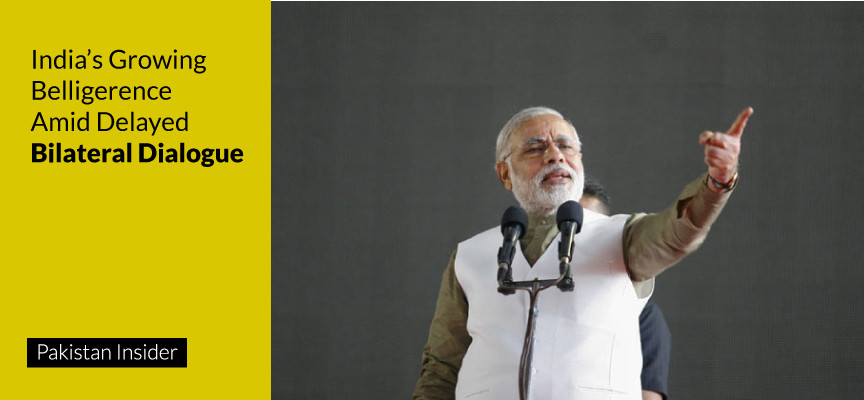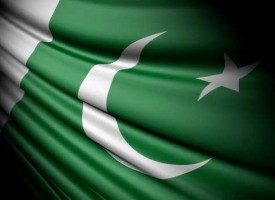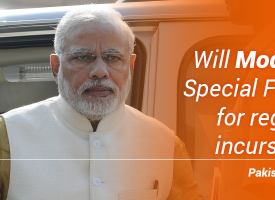On February 16, 2016, two leading Asian newspapers published opposing stories on bilateral talks. The Hindustan Times quoted Prime Minister Nawaz Sharif’s Special Assistant on Foreign Affairs Mr Tariq Fatemi that Pakistan was ‘ready to forge cooperative relations with India’. On the other hand, a report by Dawn quoted India’s new High Commissioner to Pakistan Mr Gautam Bambawale saying that the dialogue between both countries would resume ‘once the atmosphere improves’.
It’s quite ironic that opposite views by these two countries were published in their respective national newspapers, that too on the same date. As far as analysts of South Asian security affairs are concerned, there is nothing unusual in this. Rather, Pakistan and India have been known to be the ‘odd’ ones among regional countries because of their somewhat similar and yet diametrically opposing state behaviors.
Ever since the sovereign states of Pakistan and India emerged on the world map in 1947, the latter has continued to undermine the former’s existence through whatever political, diplomatic and military means it has had at its disposal. First India supported a Bengali rebellion against East Pakistan in 1971 (ultimately leading to the creation of Bangladesh) and just three years later, it triggered a nuclear arms race in the region by carrying out its first successful nuclear bomb test. Since then, Pakistan has continued to invest a hefty portion of its national budget on national defence and security, with valid assertions that it is doing all this to maintain deterrence against a hegemonic neighbor. That India had aggressive ambitions in the region is a historical fact, known well by China with which India fought an unsuccessful war during the early 60s.
It seems that all the media frenzy surrounding Pakistan-India cooperation died down because of New Delhi’s insistence on pushing forward its one-point agenda: ‘Malign Pakistan’.
For India’s elite (Brahmin) decision-makers in the top echelons of power, the term “India” denotes the unification of the entire Indian Subcontinent under an “Akhand Bharat” (Undivided India). In fact, among the strongest proponents of this regional subversion is the Rashtriya Swayamsevak Sangh (RSS), a Hindutva (Hindu militant) outfit known as the ideological powerhouse of Bharatiya Janata Party (BJP). Indian Prime Minister Narendra Modi is affiliated with the BJP and so are the members of his cabinet. Referring to this Hindu dominance strategy, current RSS chief Mohan Madhukar Bhagwat was quoted in 2007 saying that only a ‘united society’ i.e. undivided India could bring “real” freedom to India.
The free hand given to Hindutva organizations during Prime Minister Modi’s current regime fiercely negate India’s claims that it is a secular and peace-loving country. Behind the façade of jolly social media updates and selfies is an autocratic hardliner regime whose ultimate objective is the ideological-cum-geographic subversion of neighboring countries; Pakistan, Afghanistan, Nepal, Bhutan, Bangladesh, Maldives and Sri Lanka are among the priority targets.
However, India knows well that waging open war will attract global condemnation and isolation. That is why New Delhi’s modus operandi is centred around “war by other means”. The three most powerful power projection tools India has today are as follows:
1) Aggressive International Diplomacy
2) Sub-conventional Warfare
3) Information Warfare
By hook or by crook, India has continued to destabilize its neighborhood and present itself as the only ‘most serious’ nation state in Asia. Whether it be the insurgency in Balochistan or interference in Afghanistan, Nepal, Maldives and Sri Lanka through support to proxy groups or political players, India has ensured its national interests in Asia are not compromised. This is where countries such as the US, UK and Russia try to woo New Delhi into their respective camps and use it as their base of operations in the region. It won’t be wrong to suggest that modern India has become an imperialist outpost for some of the world’s leading geostrategic stakeholders.
Despite having suffered more violence and terrorism since 9/11, Pakistan continues to be the victim of India’s persistent psychological warfare. The world is made to believe that Pakistan’s civil-military leadership are involved in a never-ending internal dispute and that the state allegedly uses jihadi groups as instruments of foreign policy. Nothing could be farther from the truth. But India deserves credit for its impeccable international perception management skills.
Consider this major example; despite being the second largest standing army in the world, India successfully justifies further military expenditures by claiming that its existing resources are either ‘obsolete’ or dried up. This is also a particular phase during which Indian media publishes reports of various ‘incidents’ related to military hardware. All of a sudden, India goes weak and then rises up, with an emphatic view that it needs to defend itself against a terrorism-obsessed Pakistan.
After the terrorist attack on Pathankot air force base, India accused Jaish-e-Muhammad (JeM) of masterminding the attack even before a formal investigation by the Home Ministry was initiated. Pakistan’s national leadership was on the same page. Army chief General Raheel Sharif backed Prime Minister Nawaz Sharif in his cooperative counter terrorism efforts with India by giving a free hand to Lt Gen (retired) Nasser Khan Janjua, the National Security Adviser. This change of behavior by Pakistan was unprecedented and reflected Pakistan’s resolve to extend peace in the region by aiding India in investigations. It seems that all the media frenzy surrounding Pakistan-India cooperation died down because of New Delhi’s insistence on pushing forward its one-point agenda: ‘Malign Pakistan’.
Prime Minister Nawaz Sharif may continue buttering India for peace talks but New Delhi will only budge once it has assurance that its national interests will be secured. India’s belligerence continues to grow by leaps and bounds and yet the onus of the stalled bilateral dialogue is conveniently put on Pakistan.
One can’t help but ask again; is there anything surprising about this?
image credit: reuters









No comments!
There are no comments yet, but you can be first to comment this article.